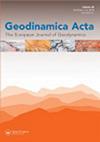保存在基质中的动物行为的最新分类
IF 1.5
Q1 Earth and Planetary Sciences
引用次数: 73
摘要
在过去的几十年里,除了Seilacher最初给出的5种动物行为学分类之外,人们还提出了许多新的化石行为学分类。在这篇文章中,我们回顾了这些新的群体,并提出了一种由Bromley最初发表的化石动物行为计划的版本,该计划根据现代行为学概念,特别是Tinbergen的概念进行了更新。由于某些行为在某些环境中比其他环境更常见,因此它们在古生态重建中很有用,形成了鱼相概念的原始基础。为了简化,我们总结了前人所做的一些动物行为学分类。然而,在某些情况下,追踪者的行为是如此独特,以至于应该采用子类别,特别是在某些环境的生态解释中,一种特殊行为可能占主导地位。本文章由计算机程序翻译,如有差异,请以英文原文为准。
An updated classification of animal behaviour preserved in substrates
During the last few decades, many new ethological categories for trace fossils have been proposed in addition to the original five given by Seilacher. In this article, we review these new groups and present a version of the scheme of fossil animal behaviour originally published by Bromley updated with regard to modern ethological concepts, especially those of Tinbergen. Because some behaviours are more common in certain environments than others, they are useful in palaeoecological reconstructions, forming the original basis of the ichnofacies concept. To simplify, we summarise some ethological categories as previously done by others. However, the tracemaker’s behaviour in some cases is so distinctive that subcategories should be employed, especially in ecological interpretations of certain environments where a special behaviour may be dominant.
求助全文
通过发布文献求助,成功后即可免费获取论文全文。
去求助
来源期刊

Geodinamica Acta
地学-地球科学综合
CiteScore
4.50
自引率
0.00%
发文量
0
审稿时长
25 weeks
期刊介绍:
Geodinamica Acta provides an international and interdisciplinary forum for the publication of results of recent research dealing with both internal and external geodynamics. Its aims to promote discussion between the various disciplines that work on the dynamics of the lithosphere and hydrosphere. There are no constraints over themes, provided the main thrust of the paper relates to Earth''s internal and external geodynamics. The Journal encourages the submission of papers in all fields of earth sciences, such as biostratigraphy, geochemistry, geochronology and thermochronology, geohazards and their societal impacts, geomorphology, geophysics, glaciology, igneous and metamorphic petrology, magmatism, marine geology, metamorphism, mineral-deposits and energy resources, mineralogy, orogeny, palaeoclimatology, palaeoecology, paleoceanograpgy, palaeontology, petroleum geology, sedimentology, seismology and earthquakes, stratigraphy, structural geology, surface processes, tectonics (neoteoctonic, plate tectonics, seismo-tectonics, Active tectonics) and volcanism.
Geodinamica Acta publishes high quality, peer-reviewed original and timely scientific papers, comprehensive review articles on hot topics of current interest, rapid communications relating to a significant advance in the earth sciences with broad interest, and discussions of papers that have already appeared in recent issues of the journal. Book reviews are also included. Submitted papers must have international appeal and regional implications; they should present work that would be of interest to many different specialists. Geographic coverage is global and work on any part of the world is considered. The Journal also publishes thematic sets of papers on topical aspects of earth sciences or special issues of selected papers from conferences.
 求助内容:
求助内容: 应助结果提醒方式:
应助结果提醒方式:


